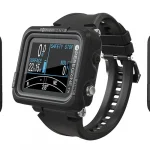Table of Contents
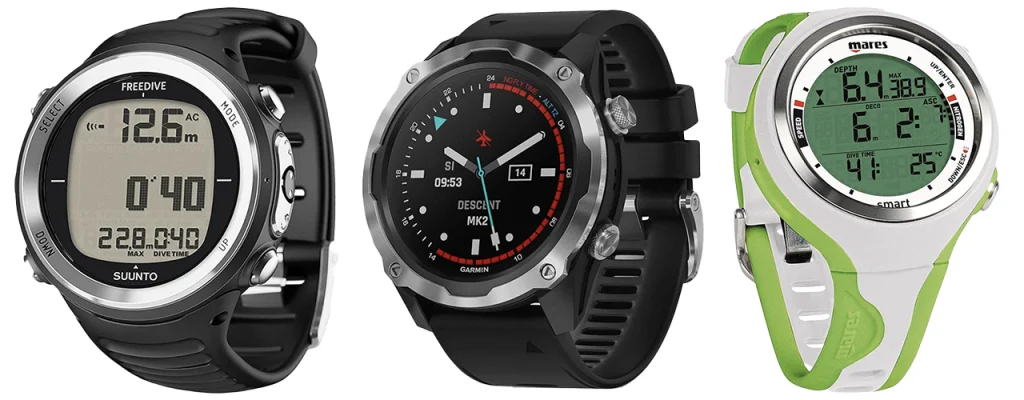
The Garmin Descent Mk2 is our top choice for advanced freedivers and multi-sport enthusiasts, while the Mares Smart Apnea stands out as the best value for apnea-focused divers.
| Category | Weight | Suunto D4F | Garmin Descent Mk2 | Mares Smart Apnea |
|---|---|---|---|---|
| Design and Build | 0.15 | 4.5/5 | 5.0/5 | 4.5/5 |
| Display and Readability | 0.20 | 4.0/5 | 5.0/5 | 4.5/5 |
| Features and Functionality | 0.25 | 4.0/5 | 5.0/5 | 4.5/5 |
| Ease of Use | 0.15 | 4.5/5 | 4.0/5 | 4.5/5 |
| Battery Performance | 0.10 | 4.0/5 | 4.5/5 | 4.0/5 |
| Value for Money | 0.15 | 4.5/5 | 4.0/5 | 4.5/5 |
| Total | 1.00 | 4.25/5 | 4.71/5 | 4.43/5 |
Editor’s Choice
For freedivers, the Garmin Descent Mk2 earns our Editor’s Choice award. Its advanced features, vibrant AMOLED display, and multi-sport functionality make it an unparalleled option for divers who want a high-performance, versatile device. Whether tracking freediving metrics, exploring dive sites with GPS, or using it as a fitness tracker on land, the Descent Mk2 excels in every category, justifying its premium price for advanced and multi-sport users.
Final Verdict: ★★★★★ (4.71/5)
| Image | Product | Detail | Price |
|---|---|---|---|
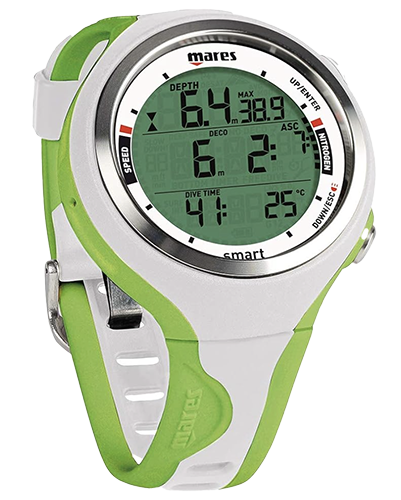 | Mares Smart Apnea |
| Click for Best Price |
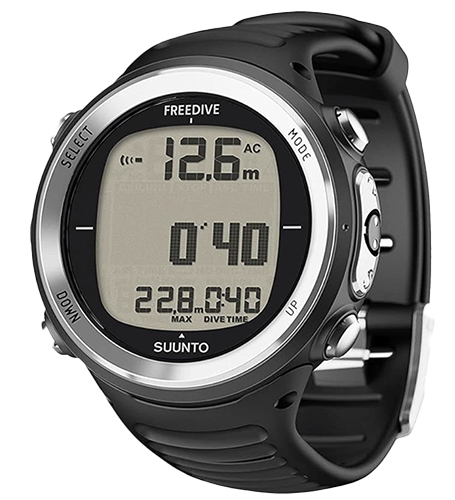 | Suunto D4F |
| Click for Best Price |
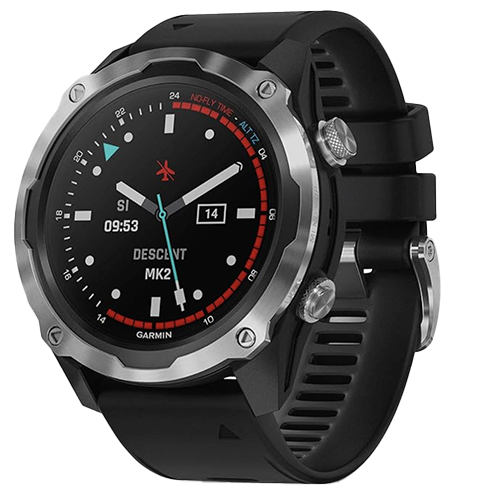 | Garmin Descent Mk2 |
| Click for Best Price |
Introduction
Selecting the right freediving computer can make a significant difference in performance, safety, and overall diving experience. In this comparison, we examine three top-rated models tailored for freedivers with varying needs and priorities: the Suunto D4F, Garmin Descent Mk2, and Mares Smart Apnea.
The Suunto D4F is perfect for beginners and intermediate freedivers, offering simplicity and reliability at an affordable price. The Garmin Descent Mk2 is a high-end, feature-rich dive computer with advanced apnea metrics, multi-sport functionality, and GPS integration, ideal for divers seeking versatility. The Mares Smart Apnea strikes a balance, providing apnea-specific features like customizable alarms and surface interval tracking in a compact and affordable design.
This guide will help you understand the strengths and weaknesses of each model, so you can choose the freediving computer that best fits your skill level, budget, and diving goals.
Best For: Freedivers of all levels looking for the perfect combination of functionality, durability, and value.
Design and Build
Freedivers prioritize lightweight, durable, and streamlined designs for comfort and performance underwater. Here’s how these three models compare:
Suunto D4F
- Compact and Lightweight: Streamlined design minimizes drag, ensuring comfort during long dives.
- Durable Materials: Features a robust composite case and scratch-resistant mineral crystal glass for reliable use in saltwater conditions.
- Adjustable Silicone Strap: Offers a secure fit for various wrist sizes.
- Depth Rating: Rated to 100 meters (328 feet), suitable for recreational and intermediate freediving.
Score: 4.5/5
Garmin Descent Mk2
- Premium Build: Stainless-steel bezel and sapphire crystal lens ensure durability and scratch resistance.
- Rugged Yet Stylish: Designed for underwater performance and everyday wear, with interchangeable straps for customization.
- Depth Rating: Rated to 100 meters (328 feet), matching most freediving requirements while also catering to scuba and multi-sport activities.
Score: 5.0/5
Mares Smart Apnea
- Slim and Lightweight: Compact design reduces drag and enhances comfort for freediving sessions.
- Durable Construction: Stainless-steel bezel and mineral glass screen provide excellent resistance to wear and impact.
- Comfortable Fit: Streamlined design and adjustable strap ensure a secure, ergonomic fit.
- Depth Rating: Rated to 150 meters (492 feet), offering greater flexibility for advanced freediving depths.
Score: 4.5/5
Summary
- Best for Premium Build and Versatility: Garmin Descent Mk2, with its stainless-steel bezel, sapphire lens, and multi-purpose design.
- Best for Lightweight Simplicity: Suunto D4F, offering a minimalistic and durable design ideal for freedivers focused on apnea.
- Best for Depth and Affordability: Mares Smart Apnea, providing a slim, durable design with a higher depth rating.

Display and Readability
Clear and accessible displays are essential for freedivers to monitor critical metrics during dives. Here’s how the displays of these three models compare:
Suunto D4F
- Monochrome LCD Screen: High-contrast, functional display provides clear visibility of key metrics such as depth, dive time, and surface intervals.
- Segmented Layout: Organized to prioritize essential data without overwhelming the user.
- Backlighting: Ensures visibility in low-light conditions or murky waters.
Strength: Simple and uncluttered design ideal for beginners and intermediate freedivers.
Score: 4.0/5
Garmin Descent Mk2
- AMOLED Display: Vibrant, high-resolution screen delivers sharp visuals with excellent readability in all lighting conditions.
- Customizable Interface: Allows users to prioritize preferred metrics, ensuring tailored usability for different diving styles.
- Always-On Mode: Ensures critical information remains visible throughout the dive.
Strength: Exceptional clarity and brightness make it the best display in this comparison.
Score: 5.0/5
Mares Smart Apnea
- Monochrome LCD Screen: Functional and high-contrast display that ensures clarity for depth, dive time, and alarms.
- Backlighting: Enhances visibility in challenging underwater environments.
- Segmented Layout: Data is presented cleanly and intuitively, allowing for easy reading during dives.
Strength: Straightforward display ideal for apnea-specific use, though less modern than the AMOLED screens on higher-end models.
Score: 4.5/5
Summary
- Best for Advanced Display Technology: Garmin Descent Mk2, offering a vibrant AMOLED screen with unparalleled readability.
- Best for Simplicity and Functionality: Mares Smart Apnea, with its clear layout and reliable backlighting.
- Best for Beginners: Suunto D4F, providing a clean and easy-to-read display with essential features for freedivers.
Features and Functionality
Freedivers require specific features to optimize performance and ensure safety. Here’s how these three models perform:
Suunto D4F
- Freediving Metrics: Tracks essential data, including depth, dive time, ascent/descent rates, and surface intervals.
- Custom Alarms: Provides visual and audible alarms for depth and dive time, enhancing safety.
- Dive Log Memory: Stores up to 20 hours of diving data for review.
Strength: Simple and focused functionality, perfect for beginner and intermediate freedivers.
Limitations: Lacks advanced features like connectivity, air integration, or multi-sport modes.
Score: 4.0/5
Garmin Descent Mk2
- Comprehensive Freediving Metrics: Tracks depth, dive time, ascent/descent rates, surface intervals, and apnea-specific alarms.
- Multi-Sport Functionality: Includes fitness tracking, GPS navigation, and scuba diving modes, making it a versatile all-in-one device.
- Connectivity: Syncs with Garmin Connect for dive logging, analysis, and mapping dive locations.
- Customizable Interface: Tailor the display to prioritize your preferred metrics.
Strength: Offers unmatched versatility and advanced features.
Limitations: Complexity and price may not appeal to those seeking apnea-specific functionality alone.
Score: 5.0/5
Mares Smart Apnea
- Apnea-Specific Features: Tracks critical freediving metrics like depth, dive time, and ascent/descent rates, with customizable alarms for added safety.
- Surface Interval Tracking: Provides detailed data to help divers recover properly between dives.
- User-Friendly Interface: Intuitive design allows for quick setup and easy operation.
- Dive Log Memory: Stores detailed dive logs for up to 9 sessions.
Strength: Focused on freediving, delivering robust apnea tools without unnecessary extras.
Limitations: Lacks connectivity and multi-sport functionality found in higher-end models.
Score: 4.5/5
Summary
- Best for Advanced Features and Versatility: Garmin Descent Mk2, with its multi-sport functionality and connectivity options.
- Best for Apnea-Specific Tools: Mares Smart Apnea, delivering excellent freediving features in a streamlined package.
- Best for Simplicity and Affordability: Suunto D4F, offering core functionality without unnecessary complexity.

Ease of Use
Freediving computers should be intuitive and straightforward, allowing divers to focus on their performance rather than navigating complex menus. Here’s how these models compare:
Suunto D4F
- Two-Button Navigation: Simple interface allows for quick access to settings and dive metrics.
- Clear Menu Layout: Designed for ease of use, especially for beginners and intermediate freedivers.
- Pre-Dive Setup: Easy configuration of alarms and essential metrics ensures smooth preparation.
Strength: Straightforward and beginner-friendly, with minimal learning curve.
Limitations: Limited customization compared to more advanced models.
Score: 4.5/5
Garmin Descent Mk2
- Multi-Button Navigation: Five-button interface provides robust control, though it may feel complex for new users.
- Customizable Interface: Allows users to prioritize specific metrics, reducing distractions.
- Garmin Connect Integration: Seamless syncing with apps for dive logging simplifies post-dive analysis.
Strength: Offers comprehensive functionality for advanced users while maintaining logical menu organization.
Limitations: Steeper learning curve due to the abundance of features and multi-sport modes.
Score: 4.0/5
Mares Smart Apnea
- Two-Button Navigation: Intuitive and efficient, even underwater or while wearing gloves.
- User-Friendly Menus: Simple layout focuses on apnea-specific metrics, minimizing distractions.
- Quick Setup: Alarms and settings can be configured easily before dives.
Strength: Balanced design, making it suitable for all skill levels.
Limitations: Lacks advanced customization found in higher-end models like the Garmin Descent Mk2.
Score: 4.5/5
Summary
- Best for Simplicity and Beginners: Suunto D4F, with its intuitive design and easy navigation.
- Best for Advanced Users: Garmin Descent Mk2, offering customizable functionality for experienced freedivers and multi-sport enthusiasts.
- Best for All Skill Levels: Mares Smart Apnea, balancing user-friendliness with apnea-focused functionality.
Battery Performance
Battery reliability is critical for freediving computers, especially for extended sessions or multi-day use. Here’s how these three models compare:
Suunto D4F
- User-Replaceable CR2450 Battery: Provides up to 12 months of battery life under typical freediving conditions.
- Battery Status Indicator: On-screen notifications alert users when the battery needs replacement.
Strength: Low maintenance and long-lasting performance, ideal for freedivers who value reliability.
Limitations: Non-rechargeable design may not appeal to eco-conscious users.
Score: 4.0/5
Garmin Descent Mk2
- Rechargeable Lithium-Ion Battery:
- Dive mode: Up to 30 hours.
- Smartwatch mode: Up to 16 days.
- GPS mode: Up to 50 hours.
- Wireless Charging: Convenient and modern charging solution.
Strength: Versatile battery life supports multi-sport use and extended sessions.
Limitations: More frequent charging required compared to non-rechargeable models like the Suunto D4F.
Score: 4.5/5
Mares Smart Apnea
- User-Replaceable CR2450 Battery: Long-lasting power designed to last up to 2 years under normal use.
- Battery Status Indicator: Provides alerts for timely replacement, reducing the risk of interruptions.
Strength: Extended lifespan and replaceable battery make it ideal for frequent divers.
Limitations: Non-rechargeable design may feel outdated for modern users.
Score: 4.0/5
Summary
- Best for Long-Term Simplicity: Mares Smart Apnea, offering up to 2 years of battery life with a replaceable design.
- Best for Versatility and Modern Charging: Garmin Descent Mk2, featuring a rechargeable lithium-ion battery with wireless charging.
- Best for Low-Maintenance Use: Suunto D4F, with its reliable, user-replaceable battery lasting up to 12 months.
Value for Money
The value of a freediving computer depends on its features, durability, and performance relative to its price. Here’s how these three models compare:
Suunto D4F
- Price: Approximately $300-$350 USD.
- Features: Focuses on essential freediving metrics such as depth, dive time, and surface intervals, without unnecessary extras.
- Durability: Reliable build ensures long-term use, making it a cost-effective option for beginners and intermediate divers.
Strength: Affordable price combined with simplicity and reliability make it an excellent entry-level choice.
Score: 4.5/5
Garmin Descent Mk2
- Price: Approximately $1,300 USD.
- Features: Offers advanced freediving metrics, multi-sport functionality, GPS navigation, and smartwatch features.
- Versatility: Ideal for divers who also engage in other sports, making it a great all-in-one investment.
Strength: Justifies its premium price for advanced freedivers and multi-sport enthusiasts, though it may be excessive for apnea-focused users.
Score: 4.0/5
Mares Smart Apnea
- Price: Approximately $300-$400 USD.
- Features: Includes apnea-specific tools such as customizable alarms, surface interval tracking, and detailed logs.
- Durability: Robust and compact design ensures long-lasting reliability at a reasonable price.
Strength: Strikes a balance between affordability and performance, offering great value for freedivers focused on apnea diving.
Score: 4.5/5
Summary
- Best for Budget-Friendly Simplicity: Suunto D4F, offering essential metrics at an affordable price.
- Best for Advanced Features and Versatility: Garmin Descent Mk2, worth the investment for multi-sport and advanced freediving needs.
- Best for Apnea-Focused Value: Mares Smart Apnea, delivering specialized freediving tools at a competitive price point.
Pros and Cons
Suunto D4F
Pros
- Affordable price makes it accessible to beginner and intermediate freedivers.
- Lightweight and compact design ensures comfort and minimal drag underwater.
- Tracks essential freediving metrics such as depth, dive time, and surface intervals.
- Durable construction with scratch-resistant glass for long-term reliability.
- Simple interface with two-button navigation ideal for users at all levels.
Cons
- Lacks advanced features like connectivity or multi-sport functionality.
- Monochrome display is less modern compared to high-end models like the Garmin Descent Mk2.
- Freediving-only focus limits its versatility for other sports or activities.
Garmin Descent Mk2
Pros
- Advanced metrics for freediving, scuba diving, and multi-sport activities.
- AMOLED display provides exceptional readability and vibrant visuals.
- Multi-sport functionality includes fitness tracking, GPS, and smartwatch features.
- Durable premium build with stainless steel and sapphire glass.
- Connectivity options like Bluetooth for dive log syncing and analysis.
Cons
- Premium price may deter budget-conscious divers.
- Steeper learning curve due to its extensive features and multi-sport interface.
- Battery life is shorter when using power-intensive features like GPS and AMOLED display.
Mares Smart Apnea
Pros
- Focused apnea-specific tools like customizable alarms and surface interval tracking.
- Compact and lightweight design enhances comfort and reduces drag.
- Durable construction with stainless steel and scratch-resistant glass.
- User-friendly interface with intuitive two-button navigation.
- Affordable price with great value for apnea-focused freedivers.
Cons
- No connectivity or data syncing options for dive analysis.
- Monochrome display lacks the vibrancy of high-end models.
- Limited to freediving functionality; lacks multi-sport or scuba modes.
Summary
- Suunto D4F: Best for simplicity and affordability, though limited in advanced features.
- Garmin Descent Mk2: Best for versatility and advanced functionality, but with a higher price and complexity.
- Mares Smart Apnea: Best for apnea-specific tools and value, though it lacks connectivity and multi-sport features.
Overall Rating
Here’s the Overall Rating section with a weighted table for the Suunto D4F vs. Garmin Descent Mk2 vs. Mares Smart Apnea comparison:
Overall Rating
Each of these freediving computers excels in specific areas, catering to different diving styles and priorities. Below is the overall rating based on key factors and weighted scores:
| Category | Weight | Suunto D4F | Garmin Descent Mk2 | Mares Smart Apnea |
|---|---|---|---|---|
| Design and Build | 0.15 | 4.5/5 | 5.0/5 | 4.5/5 |
| Display and Readability | 0.20 | 4.0/5 | 5.0/5 | 4.5/5 |
| Features and Functionality | 0.25 | 4.0/5 | 5.0/5 | 4.5/5 |
| Ease of Use | 0.15 | 4.5/5 | 4.0/5 | 4.5/5 |
| Battery Performance | 0.10 | 4.0/5 | 4.5/5 | 4.0/5 |
| Value for Money | 0.15 | 4.5/5 | 4.0/5 | 4.5/5 |
| Total | 1.00 | 4.25/5 | 4.71/5 | 4.43/5 |
Final Verdict
- Suunto D4F: ★★★★☆ (4.25/5) – A budget-friendly, lightweight freediving computer with essential features, perfect for beginner and intermediate divers.
- Garmin Descent Mk2: ★★★★★ (4.71/5) – A feature-packed, versatile dive computer for advanced freedivers and multi-sport enthusiasts seeking top-tier performance.
- Mares Smart Apnea: ★★★★☆ (4.43/5) – A compact and apnea-focused dive computer that balances affordability and functionality, ideal for freedivers prioritizing apnea-specific tools.

